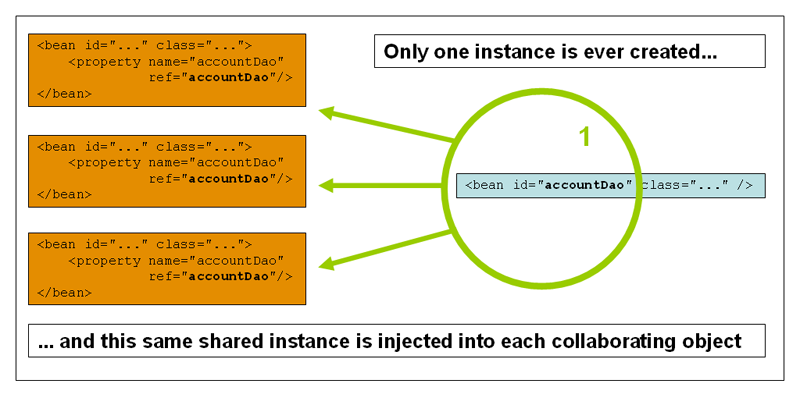bean的singleton(沒有看到生命周期範圍??)
4.5.1 The singleton scope
Only one shared instance of a singleton bean is managed, and all requests for beans with an id or ids matching that bean definition result in that one specific bean instance being returned by the Spring container.
To put it another way, when you define a bean definition and it is scoped as a singleton, the Spring IoC container creates exactly one
Figure 4.2.



Spring’s concept of a singleton bean differs from the Singleton pattern as defined in the Gang of Four (GoF) patterns book. The GoF Singleton hard-codes the scope of an object such that one and only one
<bean id="accountService" class="com.foo.DefaultAccountService"/>
<!-- the following is equivalent, though redundant (singleton scope is the default) -->
<bean id="accountService" class="com.foo.DefaultAccountService" scope="singleton"/>bean的singleton(沒有看到生命周期範圍??)
